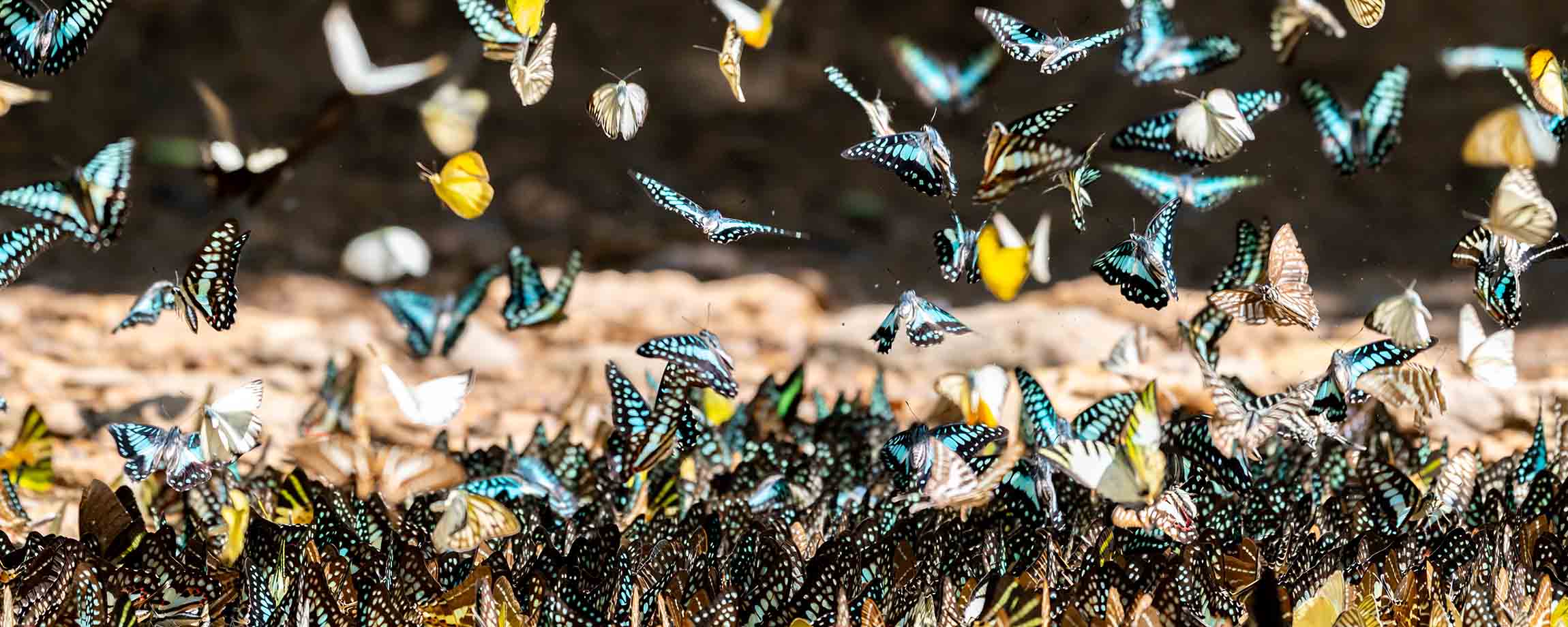Despite fears over ‘insectageddon’, there is a lack of data about virtually all insect species globally

Many studies have found that insect numbers are declining, but it is difficult to figure out exactly why ©worradirek/Shutterstock
Insects are the dominant form of animal life on our planet, providing humans and wildlife with pollination, food, and recycling services but, despite concerns about population declines, little is known about how 99% of species globally are faring.
A new approach is needed to better monitor species and protect them from the impacts of climate and land use change, pollution and invasive non-native species as soon as possible, according to a study involving scientists from the Natural History Museum, led by the UK Centre for Ecology & Hydrology (UKCEH) and ZSL (Zoological Society of London).
The researchers, whose work has been published in the journal Science, point out there are one million known insect species globally but there have been IUCN assessments for just 1% –12,100 species, with around 20% of these considered threatened.
Monitoring is largely confined to butterflies, bumblebees and dragonflies in parts of Europe and North America, with little known about insects in parts of Asia and South America and virtually no data on species in Africa.
A new study looking at butterflies found that over the past 20 years their numbers had declined by 22% on average. Some species, such as the Florida white, are seemingly on the brink of local extinction.
“This is troubling because insects account for about 90% of the world's animal species as far as we know”, explains Prof Andy Purvis, specialist in biodiversity responses to human impacts at the Museum and co-author on the paper. “On land and in freshwater they dominate wild animal biomass.”
“This means they’re hugely important in how ecosystems work, and given that we depend critically on ecosystems and what they provide us with for our quality of life, we should know how they’re doing.”
Incomplete picture
Despite reports of catastrophic insect declines, the study authors say the global state of insect biodiversity remains unclear due to the sheer complexity of insects’ lifestyles and fluctuating population trends, as well as a massive lack of data.
In their study, they propose a new framework for monitoring populations and analysing the impact of threats that integrates all available methods for studying insects. These are: comparing diversity and abundance over time and across different habitats, and through gathering expert opinion and carrying out experiments.
Dr Rob Cooke, an ecological modeller at UKCEH and joint lead author of the study, explained: “We need to find out whether insect declines are widespread and what’s causing them. The challenge is like a giant jigsaw puzzle where there are thousands of missing pieces, but we do not have decades to wait to fill these gaps and then act."
“There is a lot of interest in monitoring charismatic species such as bees and butterflies, but few people care about the supposedly unpleasant insects, even though they too provide benefits for us. For example, earwigs feed on aphids and other garden pests while cockroaches eat decaying material and keep soils healthy.”
Undervalued and understudied
Dr Charlotte Outhwaite of ZSL’s Institute of Zoology, joint lead author of the study, added: “Insects are an incredibly important part of our ecosystems, pollinating around 80% of flowering plant species and vital for 35% of global food production, yet they are undervalued and understudied.
“With a million described species it would take too long to figure what works best for each species. Instead we want to find large-scale actions that benefit the most insects. For this, we need to use all the available information we have.”
The study authors explain this means that, when there is a lack of data, experts would make judgments about
how climate, land use, pollution or invasive non-native species are affecting certain species based on the known impacts on similar types of insects. Their proposed framework would integrate four types of research methods:
Time series trends, for example a decline in the number of butterflies over a 10-year period.- Spatial comparisons, such as looking at differences in species numbers or abundance across different habitats or regions.
Experiments to investigate the response of insects to different threats, such as comparing a field sprayed with pesticides to one without, or removing invasive non-native species from one area but not another.
Expert opinion on the response of insects to threats, for example, a scientist pointing out that butterfly counts tend to be higher in warmer rather than colder forests.
By combining data from a range of sources, scientists can gain a more complete picture of how insects respond to drivers of change while allowing transparency in uncertainty and data gaps.
The next step for the researchers is to implement their approach by using the range of research methods to model insect responses to key threats. Consolidating all available data will provide an updated overview of the state of the world's insect populations.
The work is part of a project funded by the Natural Environment Research Council (NERC), which is bringing together diverse sources of data including expert knowledge to assess the impact of individual threats.
The Global Insect Threat-Response Synthesis (GLiTRS) project involves UKCEH, the Natural History Museum, University College London, the Zoological Society of London, the University of Cambridge, Queen Mary University of London, the University of Stellenbosch, the University of Reading, the University of Exeter and Imperial College London.
- Ends -
Media enquiries
An embargoed copy of the paper and images of insects (free to use with a credit) are available in a dropbox. For interviews and further information, please contact Simon Williams, Media Relations Officer at UKCEH, via simwil@ceh.ac.uk or +44 (0)7920 295384.
Notes to Editors
Paper information
Cooke, Outhwaite et al. 2025. Integrating multiple evidence streams to understand insect biodiversity change. Science. DOI: 10.1126/science.adq2110